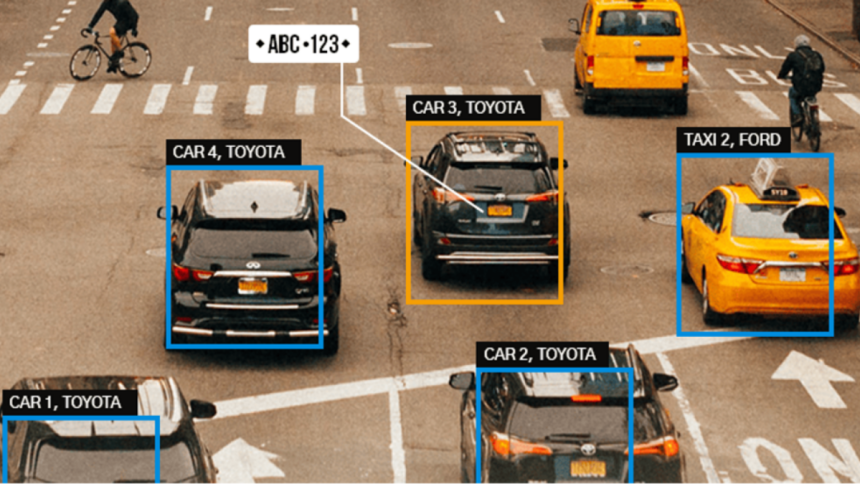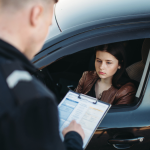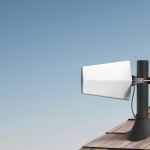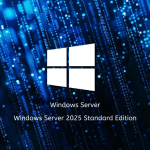Smart cities are built on advanced technologies that improve efficiency, security, and overall quality of life. One of the key innovations driving urban transformation is License Plate Recognition (LPR). This technology plays a crucial role in traffic management, law enforcement, parking automation, congestion control, and security monitoring.
License plate recognition systems use AI-driven software and LPR cameras to identify vehicles, track movements, and automate various city services. With the rise of urbanization, smart cities need reliable solutions to tackle increasing traffic, enhance public safety, and optimize infrastructure.
This article explores how LPR technology is shaping modern cities and contributing to urban intelligence.
What is License Plate Recognition (LPR)?
License Plate Recognition (LPR), also known as Automatic License Plate Recognition (ALPR), is an advanced imaging system that uses optical character recognition (OCR) to detect, capture, and analyze vehicle license plates.
How LPR Works:
- LPR Camera System Captures Images – High-resolution cameras with infrared capabilities capture vehicle license plates, even in low-light conditions.
- License Plate Recognition Software Processes the Data – AI-powered software reads the license plate characters and cross-references them with databases.
- Automated Actions Triggered – Depending on the application, LPR systems can grant access, issue fines, send alerts, or generate reports.
LPR technology is widely used in traffic control, security monitoring, toll collection, and parking management—making it an essential component of smart city infrastructure.
How LPR Contributes to Smart City Initiatives
1. Traffic Management and Congestion Control
Traffic congestion is one of the biggest challenges in urban areas. The license plate recognition system helps optimize traffic flow by:
- Monitoring Traffic Patterns – LPR systems collect real-time data on vehicle movement, helping city planners optimize road networks and improve traffic light synchronization.
- Reducing Traffic Violations – LPR-enabled enforcement cameras detect speed limit violations, red-light running, and unauthorized lane usage, discouraging reckless driving.
- Smart Tolling and Automated Payments – LPR technology enables cashless toll collection, reducing bottlenecks and improving traffic flow on highways and urban roads.
By integrating LPR with intelligent traffic systems (ITS), smart cities can analyze vehicle movement trends and implement proactive congestion management strategies.
2. Parking Management and Automation
LPR systems have revolutionized smart parking solutions, making parking more convenient and efficient.
- Automated Entry & Exit – LPR cameras recognize vehicle plates and grant access to parking lots without requiring tickets or human intervention.
- Dynamic Parking Pricing – Smart cities use LPR data to implement dynamic pricing models, adjusting parking fees based on demand and time of day.
- Eliminating Illegal Parking – LPR-enabled enforcement can detect unauthorized parking and automatically issue fines.
With LPR-powered smart parking solutions, cities can reduce circulation time (the time drivers spend searching for parking) and lower fuel consumption—resulting in a more sustainable urban environment.
3. Enhanced Security and Law Enforcement
One of the most critical applications of LPR technology in smart cities is security and crime prevention.
- Identifying Stolen or Suspicious Vehicles – LPR cameras scan passing vehicles and cross-check them against police databases to flag stolen or wanted vehicles.
- Terrorism and Crime Prevention – LPR-enabled surveillance helps law enforcement track criminal suspects, enhancing public safety.
- Real-Time Alerts for Unauthorized Vehicles – Cities can create “hot lists” to detect vehicles involved in illegal activities and send instant alerts to authorities.
By integrating LPR with city-wide surveillance systems, smart cities can strengthen security measures and respond faster to threats.
4. Public Transportation Optimization
LPR technology is also transforming public transportation systems by:
- Tracking Public Buses and Taxis – LPR helps monitor public transport vehicles, ensuring they operate on time and follow assigned routes.
- Reducing Bus Lane Violations – Unauthorized vehicles entering dedicated bus lanes can be automatically detected and fined.
- Enhancing Fleet Management – Municipalities can track and optimize public transit vehicles using real-time LPR data.
By improving public transit efficiency, LPR contributes to reduced private vehicle dependency and promotes sustainable urban mobility.
5. Environmental Benefits
LPR technology contributes to smart city sustainability by reducing traffic congestion, vehicle emissions, and fuel wastage.
- Lower Emissions from Idling Vehicles – Automated tolling, parking, and congestion management prevent unnecessary vehicle idling, reducing CO2 emissions.
- Encouraging Eco-Friendly Driving – LPR systems can be used to monitor and incentivize compliance with low-emission zones.
- Optimized Road Usage – Data from LPR analytics helps urban planners design eco-friendly transport policies that balance traffic distribution.
As more cities aim for carbon neutrality, LPR technology will play a key role in achieving environmental sustainability goals.
Challenges of Implementing LPR in Smart Cities
Despite its numerous benefits, LPR technology comes with certain challenges:
- Privacy Concerns – Citizens may be wary of mass surveillance and data collection. Smart cities must implement strict data privacy regulations to ensure transparency and security.
- High Implementation Costs – Deploying a city-wide LPR camera system requires significant investment in infrastructure, software, and maintenance.
- Potential False Positives – Errors in license plate recognition software could lead to wrongful fines or security alerts, requiring highly accurate AI algorithms.
To overcome these challenges, cities must balance security with privacy and ensure LPR systems are designed for accuracy and ethical use.
FAQs
1. How does license plate recognition improve traffic management?
LPR helps monitor vehicle movement, detect violations, automate toll collection, and optimize traffic signals, leading to smoother traffic flow and reduced congestion.
2. Can LPR cameras work in low-light or bad weather conditions?
Yes! Modern LPR camera systems use infrared technology and AI-enhanced image processing to accurately capture plates even in low light, rain, or fog.
3. Is LPR technology legal?
LPR is widely used in law enforcement and smart city initiatives. However, cities must follow privacy laws and data protection regulations to ensure ethical use.
4. How does LPR help reduce parking issues?
LPR allows automated entry, dynamic pricing, and real-time parking monitoring, helping reduce illegal parking and improving parking efficiency.
5. Can LPR integrate with other smart city technologies?
Yes! LPR can be integrated with traffic control systems, law enforcement databases, public transportation monitoring, and smart parking solutions.
Conclusion
License plate recognition technology is a game-changer for smart cities, improving traffic flow, security, parking, public transport, and environmental sustainability. By leveraging AI-powered LPR systems, cities can build safer, more efficient urban environments while reducing congestion and emissions.
However, implementing LPR requires careful planning, investment, and a balance between public security and privacy concerns. As technology advances, smart cities will continue integrating LPR with AI-driven urban intelligence solutions to create a more connected, efficient, and secure future.
Final Thought:
As urban populations grow, LPR technology will play an essential role in shaping the cities of tomorrow. Forward-thinking municipalities should embrace intelligent vehicle monitoring to build smarter, more sustainable cities for future generations.
Lynn Martelli is an editor at Readability. She received her MFA in Creative Writing from Antioch University and has worked as an editor for over 10 years. Lynn has edited a wide variety of books, including fiction, non-fiction, memoirs, and more. In her free time, Lynn enjoys reading, writing, and spending time with her family and friends.















